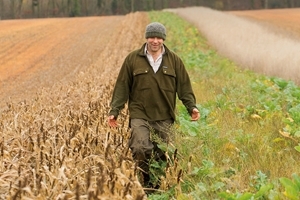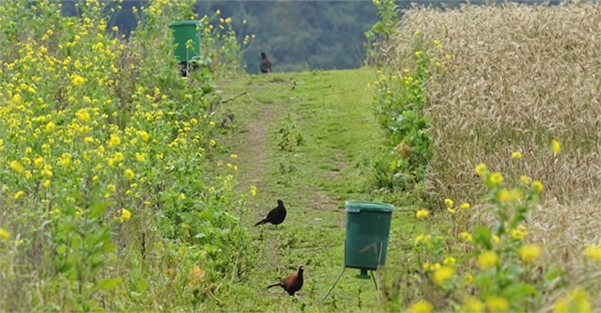 A new report, which studied the activities of nearly 1,000 gamekeepers, has identified the frequently unrecognised high level of conservation that this group of skilled and knowledgeable land and wildlife managers undertake nationally.
A new report, which studied the activities of nearly 1,000 gamekeepers, has identified the frequently unrecognised high level of conservation that this group of skilled and knowledgeable land and wildlife managers undertake nationally.
This joint survey, undertaken by the National Gamekeepers’ Organisation (NGO) and the Scottish Gamekeepers Association (SGA) and analysed by leading research charity the Game & Wildlife Conservation Trust, shows that modern gamekeepers responding to the survey manage more than 1,625,000 hectares or more than 4 million acres of land across England, Scotland and Wales. This equates to about 65% of sites designated for conservation such as Sites of Special Scientific Interest (SSSI), Special Areas of Conservation (SAC) or Special Protection Areas (SPAs).
Those responding to the survey also provide 23,426 tonnes of supplementary food for farmland birds in winter, they plant on average 47.3 ha or 117 acres of trees, and privately fund more than £2.2 million worth of wild bird cover, which benefits a host of red-listed bird species such as yellowhammer and tree sparrow. In addition, 38% of moorland gamekeepers who completed the survey are rewetting moorland, which benefits a host of plants and wildlife and helps to reduce flooding.
Professor Nick Sotherton, Director of Research at the Game & Wildlife Conservation Trust, said: “We were delighted to repeat the analysis of this survey, which was first carried out in 2011. Comparing the two studies has been fascinating and shows how modern gamekeepers, with their extensive skills and knowledge, play an important role in the conservation movement in this country. Without their considerable contribution to conservation in the UK, wildlife and landscapes would be much the poorer.”
This new report is a representative sample of the work undertaken by gamekeepers and illustrates the sheer volume of conservation work that is undertaken. Working with other conservation charities and wildlife bodies, these collaborative projects that frequently depend on the expertise and knowledge of gamekeepers are a symbol of how joint working can help to increase numbers of curlew and other red-listed birds and keep our woodland and moorland fauna at sustainable levels.
Liam Bell, Chairman of the National Gamekeepers’ Organisation, said: “I am very grateful to all those gamekeepers who participated in this very detailed survey. For the first time, this study sheds a neon light on the outstanding contribution that our gamekeepers make to wildlife conservation and habitat creation. The private investment in these habitats and the areas of land managed is staggering. The extent of their role is not always fully appreciated, but without their efforts, knowledge, skills and love for their individual patches of land, our countryside and wildlife would be in a much more precarious condition.”
Scottish Gamekeepers Association Chairman Alex Hogg said: “In popular media, gamekeepers, stalkers, ghillies and wildlife managers can often be portrayed wrongly as standing in the way of habitat rejuvenation or progress. This survey shows entirely the opposite to be true.
“These skilled land managers are at the vanguard of what is positive and progressive in our landscapes every day, and the many aspirations we, and governments, have for our land and our climate must encompass their know-how, their passion and their ability to deliver effectively at minimal cost to the public purse.”
READ THE EXECUTIVE SUMMARY HERE

Earn your GWCT Shoot Operator’s Certificate
Take the free GWCT Shoot Operator’s Test to demonstrate that you are up to speed with best practice and the key issues in shoot management.
Take Test FREE >
Notes to editors
The Game & Wildlife Conservation Trust – providing research-led conservation for a thriving countryside. The GWCT is an independent wildlife conservation charity which has carried out scientific research into Britain’s game and wildlife since the 1930s. We advise farmers and landowners on improving wildlife habitats. We employ more than 60 post-doctoral scientists and other research staff with expertise in areas such as birds, insects, mammals, farming, fish and statistics. We undertake our own research as well as projects funded by contract and grant-aid from government and private bodies.
For information, contact:
Eleanor Williams
Telephone: 07592 025476
Email: press@gwct.org.uk